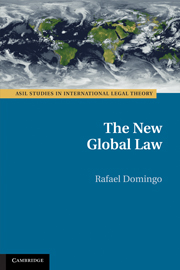Book contents
5 - Global Law, a Challenge for Our Time
Published online by Cambridge University Press: 06 July 2010
Summary
THE NEED FOR GLOBAL LAW
Thanks to technology and mass media, the world's inhabitants now make up a larger community, united around new common interests and problems. Thus, we must recognize a global community and a global space – which transcends the land-sea-air distinction – and, of course, the need for a global law to order social relations according to justice. This is not a law for or about globalization, as sometimes thought. Rather, it is strictly speaking a global law, which flows from the need to order human relations on a global scale – the scale of the human person's sphere of action today.
Whether global law is called the common law of humanity, cosmopolitan law, or world law is secondary but not trivial, for it is always helpful to fit terms to concepts as precisely as possible. But it is paramount that the new global law be founded on solid principles different from those that have shaped international law, which is grounded firmly on the notions of state, sovereignty and territoriality, legacy and diplomacy, just war and international treaties.
Just as the law of peoples became international law, international law must give way to a particular sort of global law. All three sought to order legal relations beyond their realm. But the law of peoples, which overlooked the principle of equality among peoples, was too hierarchical.
- Type
- Chapter
- Information
- The New Global Law , pp. 98 - 120Publisher: Cambridge University PressPrint publication year: 2010



